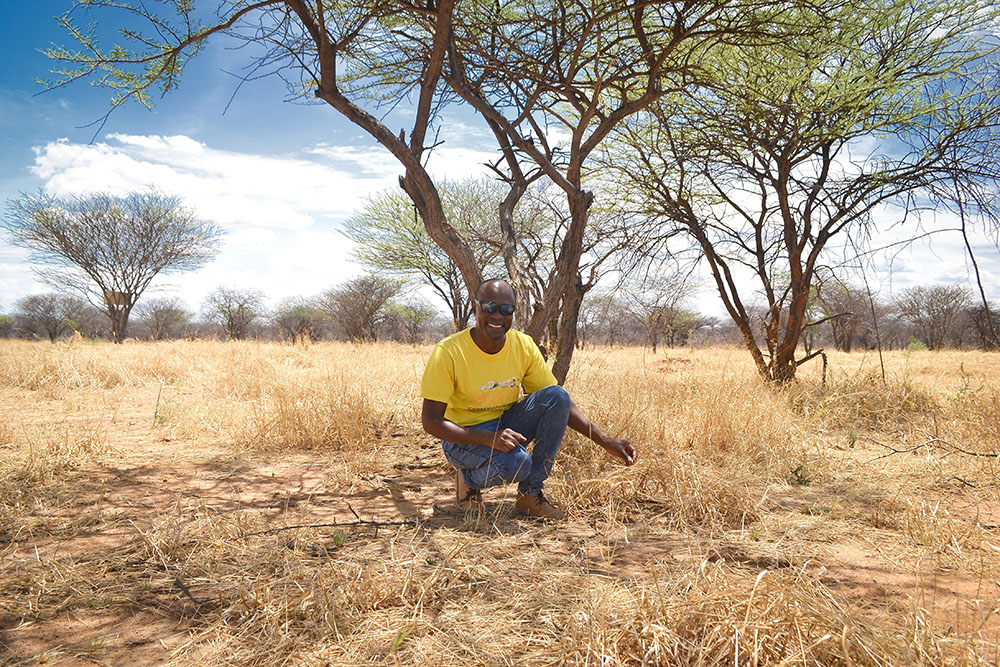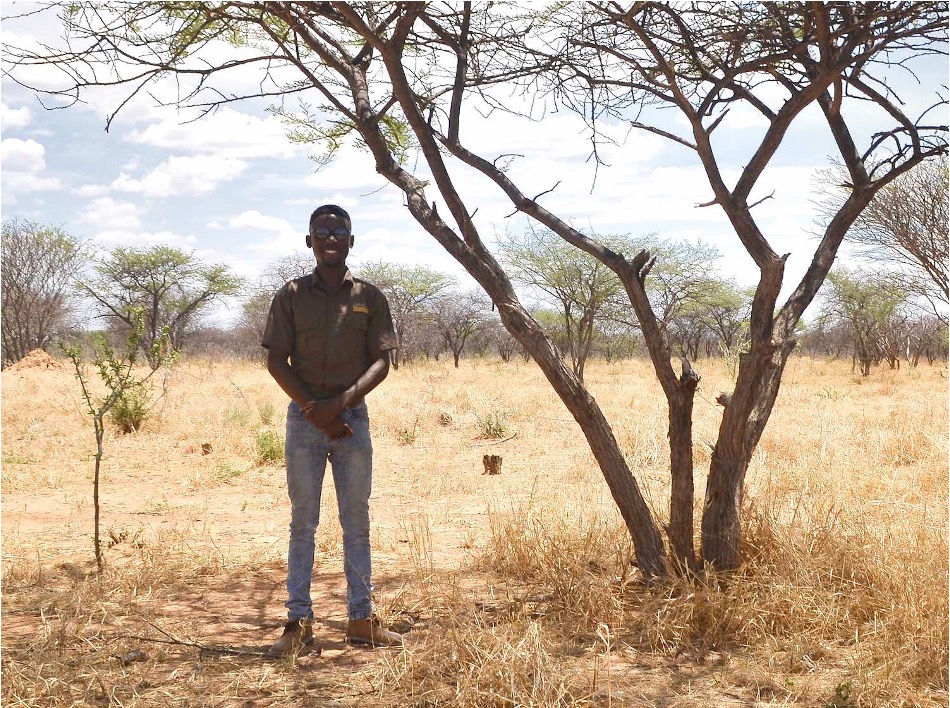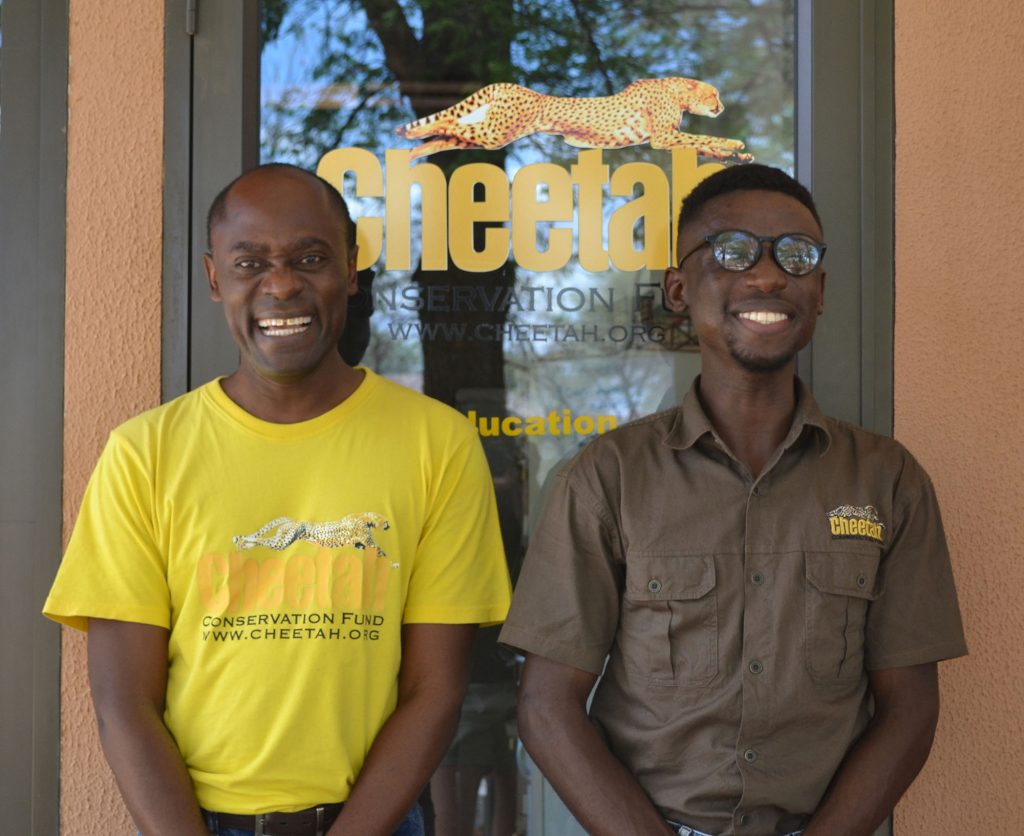How Richer Microbial Activity and Soil Diversity Returns after Bush Thinning
~
“Data has shown that if you restore your habitat you will increase grazing capacity, that will also translate to more economic benefits because you are able to increase your wildlife or cattle carrying capacity. But there are also other benefits, like your water infiltration capacity on your land will increase, meaning you get more water in your boreholes”, says Matti T. Nghikembua, the Senior Ecologist and Forestry Steward at the Cheetah Conservation Fund (CCF).
CCF classify scientific research as the backbone of their conservation activities. Matti states “we study everything from soils, reptiles, small mammals to predators. It’s about understanding the ecosystem in which cheetahs live.”
According to Matti, another focus area of research is understanding ‘how bush encroachment affects biodiversity’. “We have done soil studies assessing the soil conditions in an area that is encroached and after you’ve done a harvest (bush thinning). We also looked at what the benefits were to trees and shrubs.” CCF, with study areas all over their property, are investigating how bush encroachment affects biodiversity. Their research projects include studies on habitat restoration and biomass technology development, such as their Bushblok project, a clean-burning fuel log.

CCF’s Research on Soil and Grass Biodiversity
Their findings regarding soil and grass biodiversity are especially interesting, as Matti explains, “soil is such a complex thing, but what we found is that when you do thinning, there will be changes that will occur in the soil’s microbial activities.”
David Shipingana, a Forest and Safety Officer at CCF, and a former student at the Namibia University of Science and Technology (NUST) worked on the soil research projects at CCF, and explains, “We started studying the soil at the CCF in 2017. We looked at the impact the thinning has on the soil composition, specifically on how it impacts the soils chemical and nutrient composition.”
Soil provides a home for nutrients, beneficial bacteria, fungi and more. What the team at CCF found in their research, is that the “soil community changes, and you find much richer microbial activity after you have thinned” according to Matti. He adds that initially there will be a dip in soil activity, however after the short dip, the activity will improve to a state better than before thinning was done. Matti notes that you would then “start finding more species and increased microbial diversity. This is what grasses are looking for in their habitat because each species provides a service in the soil, and the more diversity, the more services you have in the soil.”

A Balance for Optimal Productivity

David adds that they also found that there is a balance point, that brings “optimal productivity on your land, but this means the habitat needs to be thinned moderately, not cleared, leaving some bushes behind. As soon as you do bush thinning, you disrupt the soil composition, and there will be an imbalance in the chemical composition of the soil.”
According to Matti, “This is why I like data because it shows this. We also have publications that show, that by bush thinning you are increasing prey availability. For example, species such as oryx like open habitats. If you clear the area, their numbers go up, they reproduce more. You are increasing the activity of those animals, and that is good for tourism but also for wildlife as the predators can hunt freely, especially the cheetahs.”
Economic and Ecological Benefits
David adds that, “There are benefits in the restoration process. When people realise it’s beneficial either way, economically and also ecologically, we can do so much more.”
Elaborating on the ecological benefits, Matti notes that “There will be an increase in biodiversity because you are also diversifying habitat. A species like, kudu for example, prefer thick bush. if your farm is uniformly thick you are probably only farming with kudu and leopard, because they like to be concealed.”
As Matti explains, productivity of the land is the key. “If you restore the habitat, there can be enough room for wildlife to come back. Wildlife will go where the habitat is productive.”
“We have also been engaged with communal areas and conservancies in the Greater Waterberg Landscape. Here, predators are causing a lot of economic losses, simply because the habitat is so degraded. There is an overabundance of bush, and the grass is overgrazed. Where the livestock goes, because it is productive, is also where the predators are going.”
Matti goes on to explain that, “you will wait a very long time if you wait for ecological processes to occur. With sustainable bush thinning, you bring productivity back to the land, with long term benefits. To maintain this productivity, post-thinning management is required to control the re-established saplings. Without post-thinning management, eventual loss of carrying capacity and sparsely vegetated wildlife habitat may occur.”
The Future for Biomass
When asked what is needed going forward, Matti notes “I would say that it is possible that we can restore rangelands, but we need to learn from past mistakes, and we need to collaborate. There are a lot of projects out there, and people need to know about these initiatives because they have become information hubs for the country.”
David adds that “the future of biomass in Namibia is very promising, there is potential and opportunity if people are all going in the same direction. It’s a win-win.”
CCF’s mission is to ensure the long-term survival of the cheetah and their ecosystem through a multi-disciplined and integrated conservation program of research, management and education. Through the understanding of the cheetahs’ biology and ecology, and the sharing of this knowledge, they have become champions of the Namibian biomass industry.

Further Sources:
Read about the CCF Bushblock factory
Watch the video on CCF Biomass Facility
Read the Journal article on Response of wildlife to bush thinning on the north central freehold farmlands of Namibia. Available from https://cheetah.org
Read the Journal article on The influence of two levels of debushing in Namibia’s Thornbush Savanna on overall soil fertility, measured through bioassays. Available from https://cheetah.org
[wpfilebase tag=file id=138 /]
